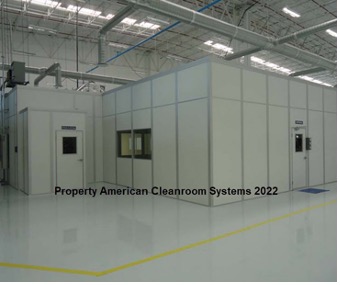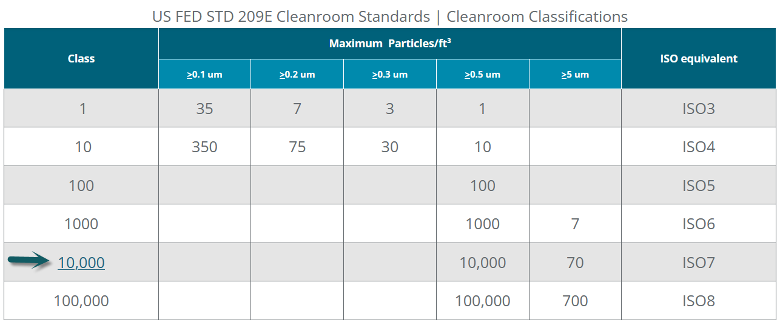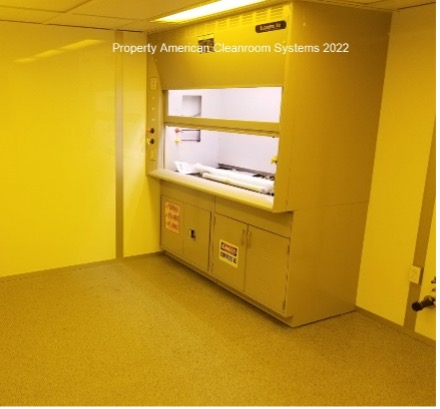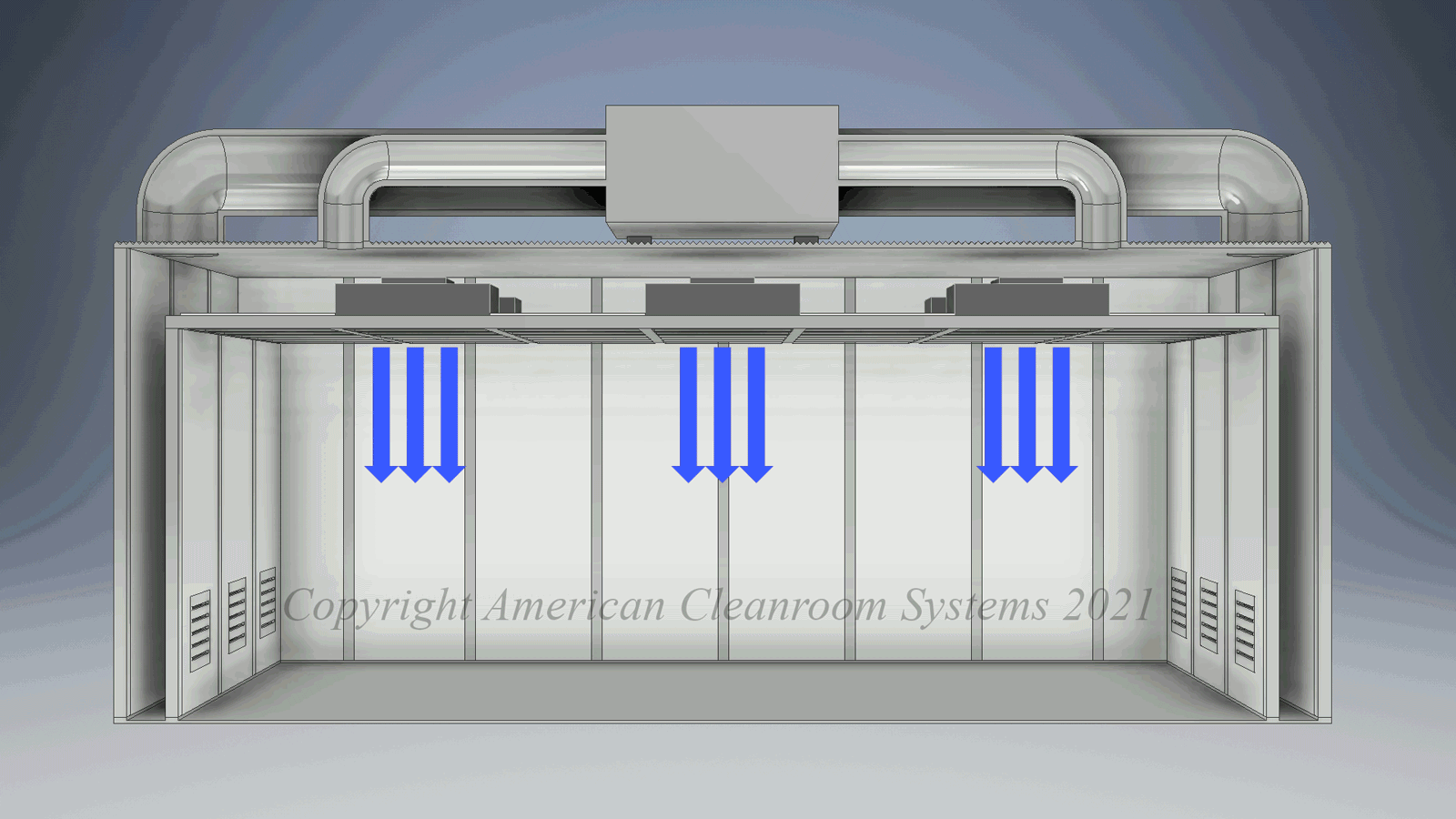ISO-7 cleanroom classification is a common medium level of the cleanroom classes. The ISO cleanroom standards are set by the International Organization for Standardization (https://www.iso.org/standards.html). They are a private international organization with a membership of 167 national standards bodies. The ISO cleanroom classification system used in the United States is primarily for pharmaceutical cleanrooms, medical device cleanrooms, biotech cleanrooms, life-science cleanrooms, and USP797/800 compounding cleanrooms. Europe and the rest of world uses the ISO cleanroom classification system for all industries except semiconductor.
ISO-7 cleanrooms are required to have 60 air changes per hour of HEPA filtered air and less than 2,930 particles/meter3 greater or equal to 5 microns. By comparison, a conditioned office space (non-cleanroom space) would have more than 100X as many particles per meter3. ISO-7 cleanroom classification also has requirements for >0.5 micron and >1 micron size particles (see table 1).
There is a separate FED 209E cleanroom classification system that has been historically used in the United States for industrial cleanrooms such as semiconductor cleanrooms and printed circuit board cleanrooms. The ISO cleanroom classification is on a metric system (particles per meter3). The FED 209E cleanroom classification system is based on imperial system (particles per feet3). There are comparable ISO and FED 209E cleanroom classes for each level of cleanliness. An ISO-7 cleanroom classification corresponds to FED 209E class 10k cleanroom classification (see table 2).
There are three different types of ISO-7 classification cleanrooms. They can be a modular cleanroom, a stick built (gypboard on studs) cleanroom or a softwall cleanroom. A modular cleanroom has advantage of fast install, easily modified or disassembled and moved to alternative site and can be upgraded to higher cleanroom classification such as ISO-6. A stick-built ISO-7 classification cleanroom requires the gypboard walls to be painted with epoxy paint. The cost can be slightly cheaper than modular but it takes significantly longer to build and is difficult to modify. A softwall ISO-7 classification cleanroom must be one pass so it cannot incorporate air conditioning. The stick-built cleanroom cost is similar to a modular cleanroom.
Filtration for ISO-7 classification cleanrooms
Filtration for ISO-7 cleanrooms are done with HEPA filters. The best modular cleanroom design uses a negative pressure plenum with HEPA fan filter units in the ceiling and incorporated low wall air returns to achieve laminar air flow. The HEPA filtered air sweeps dirt down to the floor and horizontally to the low wall air returns.
Cleanroom gowning for ISO-7 classification cleanrooms
Typically, cleanroom personnel wear cleanroom shoe covers to avoid tracking dirt into the cleanroom. Cleanroom head covering can be a cleanroom bouffant or cleanroom hood. Finally, they wear clean room jackets extending down to operator’s knees. All the garments are manufactured from special non-particulating cleanroom approved materials. Options include disposable or washable (you send back to cleanroom laundry) garments. The cleanroom shoe covers and bouffant caps are typically disposable. It is critical that the personnel wear cleanroom garments if user wants to maintain ISO-7 cleanroom classification.
Why gown room/airlock for ISO-7 classification cleanroom?
Because an ISO-7 classification cleanroom does 60 air changes per hour, if a door is even briefly opened to the dirty exterior it can take 10 to 15 minutes for the room to restore to class. The gown room/airlock will have HEPA filtration so the recovery time is typically reduced to under 5 minutes. Gown room / airlocks are a critical part of your ISO-7 classification cleanroom.






